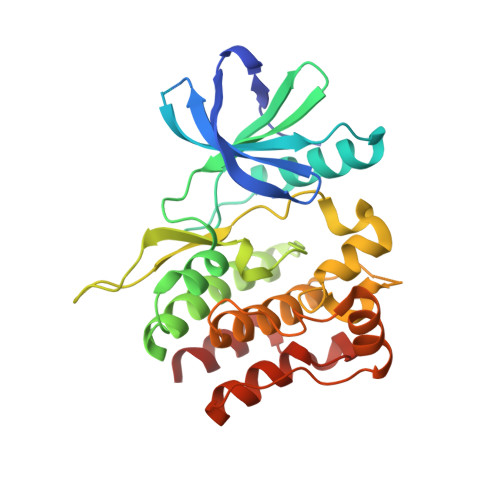Reducing False Positives through the Application of Fluorescence Lifetime Technology: A Comparative Study Using TYK2 Kinase as a Model System.
Greenhough, L.A., Clarke, G., Phillipou, A.N., Mazani, F., Karamshi, B., Rowe, S., Rowland, P., Messenger, C., Haslam, C.P., Bingham, R.P., Craggs, P.D.(2021) SLAS Discov 26: 663-675
- PubMed: 33783261
- DOI: https://doi.org/10.1177/24725552211002472
- Primary Citation of Related Structures:
7AX4 - PubMed Abstract:
The predominant assay detection methodologies used for enzyme inhibitor identification during early-stage drug discovery are fluorescence-based. Each fluorophore has a characteristic fluorescence decay, known as the fluorescence lifetime, that occurs throughout a nanosecond-to-millisecond timescale. The measurement of fluorescence lifetime as a reporter for biological activity is less common than fluorescence intensity, even though the latter has numerous issues that can lead to false-positive readouts. The confirmation of hit compounds as true inhibitors requires additional assays, cost, and time to progress from hit identification to lead drug-candidate optimization. To explore whether the use of fluorescence lifetime technology (FLT) can offer comparable benefits to label-free-based approaches such as RapidFire mass spectroscopy (RF-MS) and a superior readout compared to time-resolved fluorescence resonance energy transfer (TR-FRET), three equivalent assays were developed against the clinically validated tyrosine kinase 2 (TYK2) and screened against annotated compound sets. FLT provided a marked decrease in the number of false-positive hits when compared to TR-FRET. Further cellular screening confirmed that a number of potential inhibitors directly interacted with TYK2 and inhibited the downstream phosphorylation of the signal transducer and activator of transcription 4 protein (STAT4).
Organizational Affiliation:
Medicine Design, Medicinal Science and Technology, GlaxoSmithKline, Stevenage, Hertfordshire, UK.
















